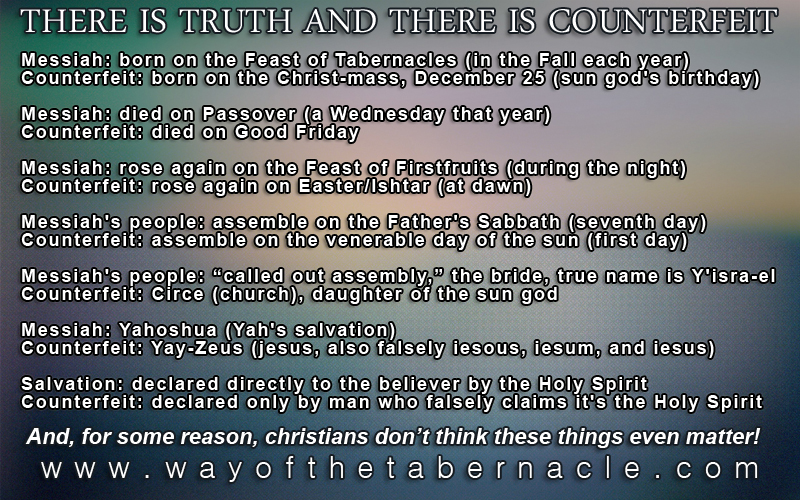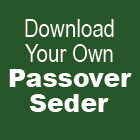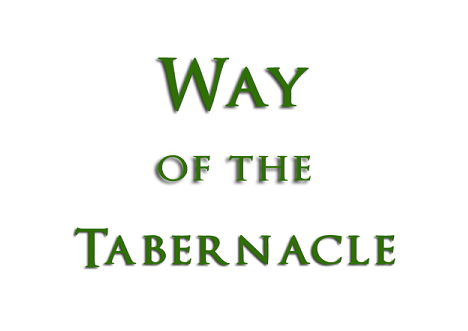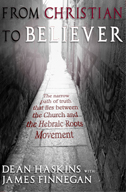The truth
without the traditions of men . . .
the traditions of YAH
without slavery TO the written law.
In Ephesians 4:4-6, the apostle Paul said, “There is one body and one Spirit, just as you also were called in one hope of your calling; one Lord, one faith, one baptism, one God and Father of all who is over all and through all and in all.”
One body and one faith, while christianity has some 41,000 different denominations, all of which disagree with one another to some extent.
During the 2nd and 3rd centuries, after all of the New Testament apostles had died, there were carnal pagans who thought they were choosing to be a part of this “new faith” that Paul had taught, but there was a big hindrance for them—they bitterly hated the physical Jews. So, while they wanted to embrace what Paul had taught, they also desired to separate themselves from anything that was associated with the physical Jews (the traditions that Paul had taught the Gentile converts—1 Corinthians 11:2, 2 Thessalonians 2:15).
So, to “join” the new faith, but also to separate themselves from looking anything like “the Jewish dogs” they despised, they abolished the Father's Sabbaths and replaced them with pagan counterfeits that all came from Babylonian sun worship—SUNday assembling, christ-mass, easter/ishtar, etc.
Not understanding what Paul had taught about the difference between physical Jews (who were cut off from Y'isra-el if they didn't believe in Messiah Yahoshua—Romans 11) and true Jews (Romans 2:29—anyone of any race or bloodline who is given the NEW covenant that was revealed on the fulfillment of the Feast of Weeks—Acts 2), the pagan progenitors of christianity stripped the one true faith of its foundations and replaced them with paganism and humanism.
What was invented was DIFFERENT from the one true faith that Paul had taught. So, both belief systems cannot be the one true faith of the scriptures. We believe the one true faith is what Paul and the other apostles taught, and that christianity, which was codified in the 4th century by sun-worshiping emperor Constantine, is a counterfeit of the one true faith—what Paul foretold as “a falling away" in 2 Thessalonians 2:3.
Because the Father's traditions reveal many doctrinal truths (and those traditions include the Sabbaths—weekly and annual, the wedding traditions, and the temple ordinances and practices, all of which are physical foreshadows of future-revealed spiritual real substances), christianity lost those things the Father gave for human minds to comprehend spiritual substances, and replaced them with myriad false teachings about the true faith by lifting passages of scripture out of their contexts, and by twisting and distorting what the scriptures teach.
As Messiah Yahoshua said in John 4:24, “Yah is spirit, and those who worship Him MUST worship in spirit and TRUTH,” and as christianity is not the faith that Paul and the other apostles preached, but a counterfeit of it, then it is vital for the one true faith to be shared to lead people OUT of christianity and into the truth, for there is no eternal life in any counterfeit.
One of those traditions that christianity is mostly blind about is the way of the tabernacle—the progression from the outer courtyard, through the holy place, and then into the holy of holies—which is a physical representation of the Passover journey from Egypt to Mt. Sinai, and is a picture (physical foreshadow) of how those who are part of Messiah's bride receive the covenant, as the physical Jews were a foreshadow of Messiah's bride—the true Jews.
Sadly, those who are lost in the false teachings of christianity do not understand the truths presented in that momentous picture, and falsely think that their human decisions can save them, and that scripture, which is given only to those who ARE saved, can confirm their salvation; but, scripture cannot do that (the confirmation of salvation is NOT given in writing—Romans 8:16).
In this website are articles that detail explicitly the many differences between the one true faith and christianity, the counterfeit of it. Also, there is a link to our blog at the top left of this page. Please contact us if you have any questions about anything presented herein.
There is only ONE true faith, and christianity is indeed a counterfeit of it. Learn why inside this website.

Salvation
Traditions
Other Truths
But now in Yahoshua the Messiah you who formerly were far off have been brought near by the blood of Christ. For He Himself is our peace, who made both groups into one and broke down the barrier of the dividing wall, by abolishing in His flesh the enmity, which is the Law of commandments contained in ordinances, so that in Himself He might make the two into one new man, thus establishing peace, and might reconcile them both in one body to Yah through the cross, by it having put to death the enmity. Ephesians 2:13-16




